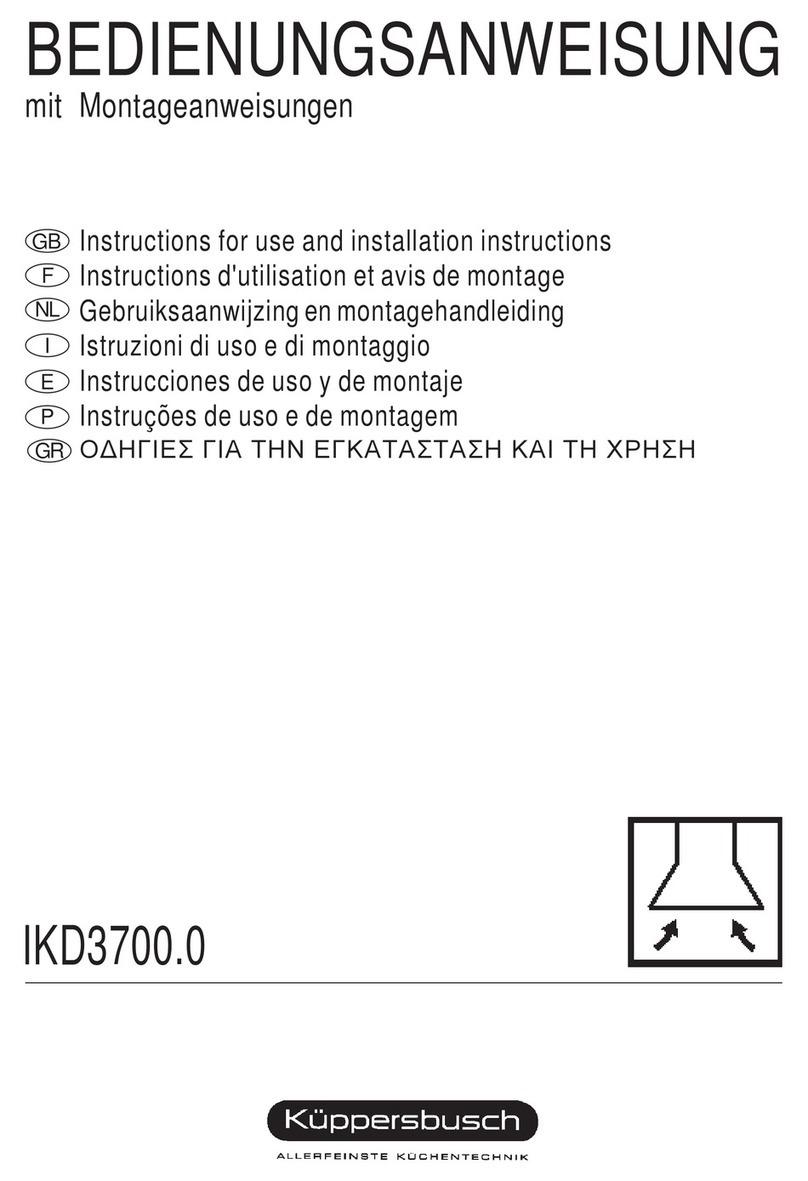15GB
○○○○○○○○○○○○○○○○○○○○○○○○○○○○○○○○○○○○○○○
○○○○○○○○○○○○○○○○○○○○○○○○○○○○○○○○○○○○○○○○○○○○○○○
Fitting the wall brackets and Splashback
Please refer to (fig.2a-b):
•Draw a vertical line on the wall, from the centre of the cooking appliance up to the ceiling,
using a marking pen. This is to ensure the correct vertical alignment of the various parts.
• Fixing the wall brackets item 2:
a) Place one of the brackets 2 against the wall approximately 1 or 2 mm from the ceiling or
from the top limit, aligning its centre (slot) with the vertical line.
b) Mark the centres of two keyholes in the bracket on the wall.
c) Rest the other bracket 2 against the wall, aligning it with the vertical line, at a distance X
measured as shown in fig.2 equal to the height of the upper chimney element S supplied
with the hood. The position X may vary, according to the various sizes of upper chimney
element available.
d) Mark the centres of the keyholes in the bracket on the wall.
• Drilling fixing holes item 1:
a) Mark a point on the vertical line at a distance from the cooking appliances of:
d =970 min (distance without splashback).
d =height of splashback + 350 mm (distance with splashback).The distance H is the
minimum height in mm from the cooking appliances to the bottom edge of the front panel
of the hood.
b) At the point marked, draw a horizontal line parallel to the cooking appliances.
c) Drill two holes in the wall 1 using an 8 mm drill bit (fig.2a), and insert the rawl plugs and
screws into the holes 1 (4.2 x 44.4 screws). Fix the screws, leaving a space of 5-6 mm
required to hook up the canopy. Small adjustments can be made using the hood adjustment
screws (see Fitting the canopy). The hood should have a maximum excursion of 20 mm.
• Splashback (optional)
When a splashback is to be fitted, the distance between the hood and the cooking
appliances will be determined by the height of the splashback B and whether or not there
is a raised back on the worktop. The splashback is to be installed before installing the
canopy. If the splashback is to be fixed to the wall using both the top and bottom fixing
holes, care must be taken to ensure that the splashback is fitted at the correct height
before fixing the base units or at least the worktop covering them. As this is a complex
operation, it should only be undertaken by the technician installing the kitchen units or by
a competent person who knows the final dimensions of the units. If the splashback is to
be fixed through the top fixing holes only, proceed as follows:
a) Rest the splashback on the worktop and against the wall, as illustrated in fig.2 .
b) Mark the centres of the two holes in the top surface.
c) Drill the wall using an 8 mm drill bit, and fix the splashback using the rawl plugs and
screws provided.
d) If necessary, the installer should secure the splashback to the wall by tucking the bottom
edge down behind the rear of the worktop.
Fixing the canopy
Before starting to fix the canopy it will be necessary to adjust the support brackets S1 by
turning the adjustment screws in a clockwise direction until their reach their limit (Fig.3):
a) ook the canopy onto the two size 4.2 x 44.4 screws 1 fitted as described above (Fig. ).
b) Level the hood by turning the adjustment screws and then locking them.


















































